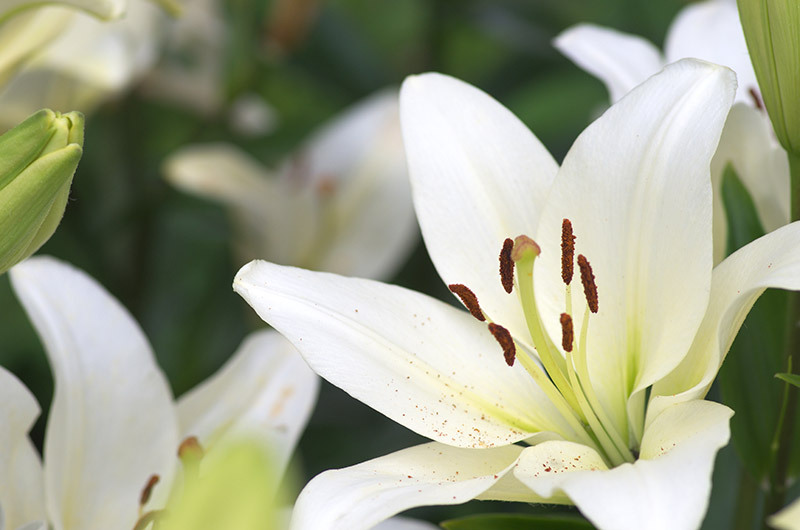Exploring Wonders: 8 Facts You Didn't Know About Sunflowers
Posted on 13/08/2025
Exploring Wonders: 8 Facts You Didn't Know About Sunflowers
Sunflowers are more than just stunning blooms lighting up fields with their vibrant yellow petals. Beyond their beauty, these marvels of nature possess fascinating qualities and a rich history that's often overlooked. In this article, we'll delve into eight surprising facts about sunflowers that are sure to broaden your appreciation for this iconic flower. Whether you are a gardening enthusiast, a lover of nature, or simply curious, read on to uncover the wonders hidden behind the bright faces of sunflowers!
Understanding the Sunflower: More Than Meets the Eye
The scientific name of the sunflower is Helianthus annuus, and it derives from the Greek words "helios" meaning sun and "anthos" meaning flower. These annual plants are champions of adaptability and resilience, thriving in diverse environments across the globe. While their cheerful appearance is well-known, the sunflower's hidden wonders reach far beyond mere aesthetics.

8 Amazing Facts About Sunflowers You Probably Didn't Know
1. Sunflowers Track the Sun: Heliotropism in Action
One of the most fascinating features of sunflowers is their unique behavior known as heliotropism. This means that young sunflower plants actually follow the movement of the sun from east to west during the day. This ability allows them to maximize photosynthesis, growing faster and healthier as a result.
- Young sunflowers face east in the morning, track the sun's journey across the sky, and return to face east at night.
- As sunflowers mature, their movement slows down, and fully grown flowers usually face east permanently.
This fascinating sun-following phenomenon demonstrates how intricately connected sunflowers are to their environment, making them a botanical wonder.
2. A Sunflower is Not a Single Flower
Did you know that what seems like a single sunflower is actually a mosaic of hundreds of tiny flowers? The central disc of a sunflower head is packed with small blooms called florets, each capable of producing a seed.
- The outer yellow petals are known as ray flowers and are sterile.
- The central disc consists of hundreds to thousands of miniature flowers that mature into sunflower seeds.
This unique arrangement is called an inflorescence. So, next time you admire a bright sunflower head, remember you're actually looking at an entire community of blooms!
3. Sunflowers Support Biodiversity
Sunflowers play a significant role in supporting local ecosystems. Their pollen and nectar attract a wide array of pollinators including bees, butterflies, and birds.
- They serve as a valuable food source for honeybees and native pollinators, enhancing biodiversity.
- Birds, especially finches, feast on sunflower seeds, spreading them far and wide, which promotes natural regeneration.
By planting sunflowers in your garden, you can create a mini-wildlife sanctuary--helping sustain the vibrant tapestry of life around you.
4. Sunflowers Have Space Credentials
Did you know that sunflowers have traveled to space? In 2012, astronaut Don Pettit grew sunflowers on the International Space Station, observing their growth in zero gravity. This experiment was crucial for understanding plant development in space--an important step for future space agriculture.
- Growing sunflowers in space helps scientists explore sustainable food sources for long-term missions.
- This cosmic adventure highlighted sunflowers' adaptability to different environments--right from sunny fields on Earth to the confines of a space station!
5. Sunflowers: Natural Soil Cleaners
Another astounding fact about sunflowers is their phytoremediation abilities. Phytoremediation is a process where plants help clean up soil by absorbing harmful heavy metals and toxins.
- Sunflowers have been planted at sites contaminated by nuclear disasters, like Chernobyl and Fukushima, due to their capacity to extract toxins such as lead, arsenic, and uranium from the soil.
- These plants don't just beautify lands; they restore them for future generations to enjoy.
This remarkable talent places sunflowers among the most important plants for environmental restoration.
6. There Are Over 70 Species of Sunflowers
The Helianthus genus includes more than 70 recognized species. While the common sunflower (Helianthus annuus) is the most famous, you'll find a variety of wild and ornamental sunflowers flourishing across North and South America.
- Sunflowers vary widely in size, color, and form--from towering giants over 12 feet tall to petite varieties perfect for bouquets.
- Their colors are not limited to yellow; some species sport red, orange, or even purple-tinged petals.
The sheer diversity of sunflowers means there's a perfect type to suit every landscape or garden design.
7. Sunflowers Have Been Cultivated for Over 4,500 Years
Sunflowers have a rich history rooted in Native American cultures. Archaeological evidence shows that sunflowers were domesticated as early as 2300 BCE. Used for food, oil, and even cosmetic purposes, sunflowers were highly valued.
- Native Americans ground the seeds into flour, extracted oil, and used the plant for medicinal purposes.
- The sunflower was later introduced to Europe and became a staple crop for its ornamental beauty and broad uses.
The global popularity of sunflowers is a testament to their longstanding utility and charm.
8. Sunflower Seeds: A Nutritional Powerhouse
Most people enjoy sunflower seeds as a crunchy snack, but few realize just how nutritious they are! Packed with vitamins, minerals, and healthy fats, sunflower seeds are an excellent addition to any diet.
- They are rich in Vitamin E, magnesium, and selenium--nutrients vital for heart health and immunity.
- Sunflower oil, extracted from the seeds, contains beneficial unsaturated fats and is commonly used in cooking worldwide.
Including sunflower seeds in your meals can provide a host of health benefits, making this flower not just beautiful, but also a key component of nutrition.

Beyond Beauty: Why Sunflowers Matter
Sunflowers are much more than the cheerful blooms we see during summer. Their value encompasses ecological, historical, nutritional, and environmental importance. Understanding the lesser-known facts about sunflowers inspires us to recognize how interconnected humans are with these extraordinary plants.
Sunflowers Around the World
Sunflowers are not just North American natives--they have become a global phenomenon. Countries like Ukraine and Russia are leading producers, leveraging sunflower oil in their culinary traditions. In art and culture, sunflowers have inspired creative minds, most notably Vincent van Gogh, whose famous sunflower series immortalized their golden beauty.
- Festivals celebrating sunflowers are a common summer event, with vast fields attracting visitors, artists, and photographers worldwide.
- Symbolically, sunflowers represent adoration, loyalty, and positivity--a testament to their universal appeal.
Cultivating Sunflowers in Your Garden
Growing your own sunflowers is rewarding and easier than many think. These plants require full sun, well-drained soil, and moderate watering. Here are some tips to help you succeed:
- Choose a Sunny Location: Sunflowers thrive best with at least 6-8 hours of sunlight daily.
- Planting Distance: Give each plant enough space, about 1-2 feet apart, especially for larger varieties.
- Watering: Keep the soil moist but not waterlogged. Deep, infrequent watering promotes robust roots.
- Support Growth: Tall varieties may need staking to prevent them from toppling over in wind or rain.
With a little care, you'll soon witness the joy of watching sunflowers soar toward the sky, followed by the delight of harvesting your own seeds.
The Enduring Wonder of Sunflowers: A Flower That Inspires
From their unique sun-tracking movements to their role in space exploration, sunflowers stand out as one of nature's most remarkable creations. Their ability to clean soil, nourish people, and inspire art underscores their significance in both nature and culture. As you wander past a radiant sunflower field or snack on sunflower seeds, take a moment to appreciate the extraordinary facts and enduring legacy of this beloved plant.
Key Takeaways: Fascinating Facts About Sunflowers
- Sunflowers follow the sun--a phenomenon called heliotropism.
- Each sunflower head is made up of hundreds of tiny flowers.
- They play a crucial role in supporting pollinators and local wildlife.
- Sunflowers have boldly gone to space to help advance plant science.
- They assist in cleaning up environmental hazards like soil toxins.
- Over 70 unique species offer diverse beauty and utility.
- Sunflowers have a long and storied history with humanity.
- Sunflower seeds are a nutrient-rich addition to a healthy diet.
Make it a point to explore the wonders of sunflowers--plant them in your garden, learn about their history, or simply marvel at their sunlit faces the next time you pass by a field. Not only are you celebrating a flower of great beauty, but you're also connecting with the rich stories and impressive feats that make sunflowers extraordinary.
Curious for more? Keep discovering the amazing world of plants and share these little-known sunflower facts with your friends and family. There's always another surprise blossoming in the garden!
Latest Posts
Colorful Birthday Blooms that Amaze
Bring Timeless Elegance with Top 12 Long-Lasting Florals
Creating Stunning Hydrangeas: Essential Care Techniques







